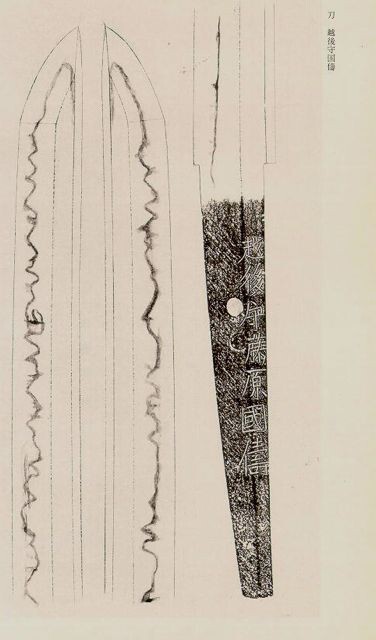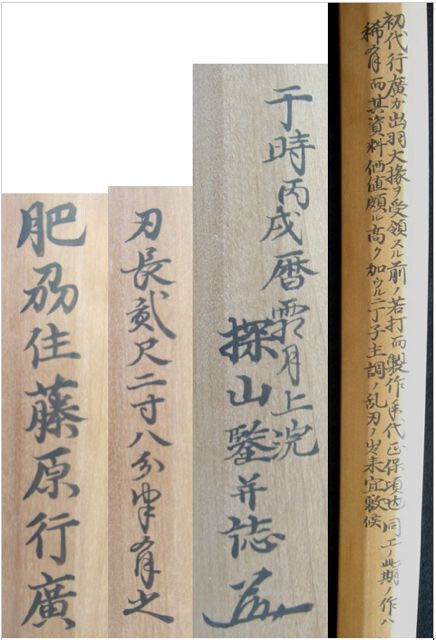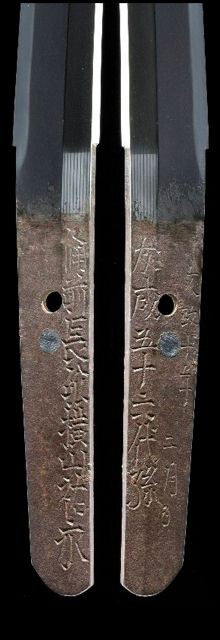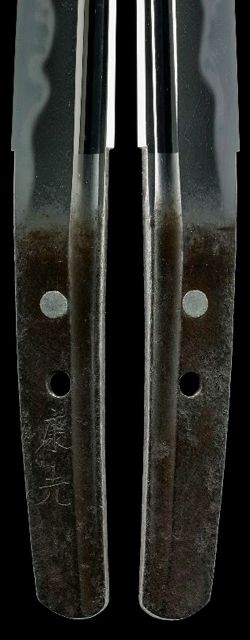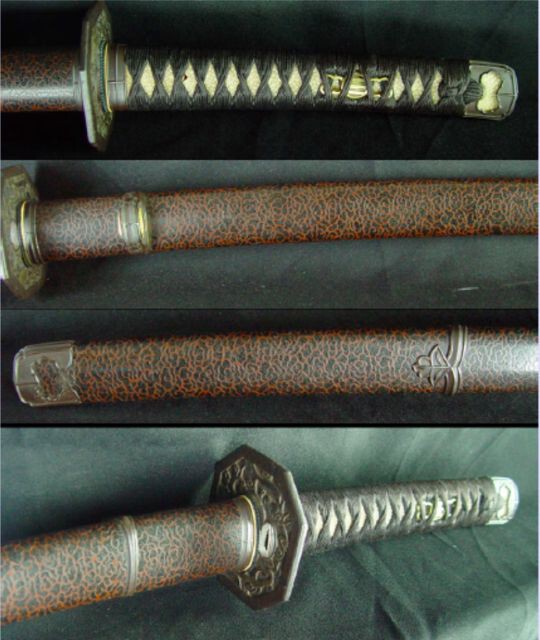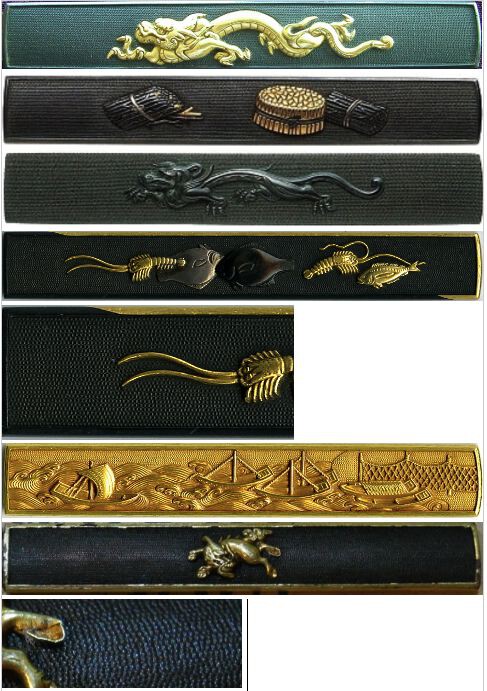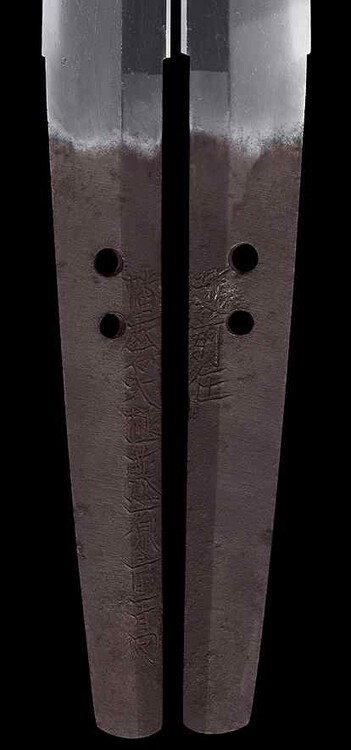-
Posts
1,029 -
Joined
-
Last visited
Content Type
Profiles
Forums
Events
Store
Downloads
Gallery
Everything posted by Eric H
-
-
Of course not. It‘s ironic... Tanobe san cares a damn about the opinion of a „gaijin“. It‘s a parlance used by Swiss people probably badly translated. Different views on this matter were expressed and I respect them. However, if collectors in Japan refuse to buy swords papered by NBTHK I wonder based on what? The motifs? Eric
-
Tanobe san sends greetings I‘m afraid you haven‘t understood the message: Sayagaki by a „nobody“ is worthless...saygaki by an expert like Tanobe san is an enrichment not only by its skillful and artistic execution but also because of addional information on the respective sword. As you are not able to read the forth columne unless the help of our Japanese friends, you ignore totally the intended purpose, its beauty and informative content of this sayagaki...but this is your problem, not mine. This Katana, mei Hizen Yukihiro (1617-1683) etc. is not dated. Supposed you have the sword before you, are you able to determine in which working period it has been made by this smith?... No, you are not able... why... quite simple... you don‘t have the background, knowledge and expertise of Tanobe sensei. This sword was on kantei at NBTHK Europe... one member gave right attribution, but when without tsuka, there were others who claimed the nakago tapers too much...insinuating a possible gimei...always those „super knowledegeable“ ones...but there was the sayagaki. Tanzan wrote: This is an early work of Yukihiro first generation before he was given Dewa Daijo. This was made around Shoho era. As the works of this smith are rare, this is valuable as a historical material. And the quality of irregular hamon with choji pattern is quite good. Unfortunately this important information is not given in the paper. I for one appreciate highly sayagakis by true experts, those who cannot sympathize...who cares. Eric
-
Sorry, I disagree, it's not "nice", a sayagaki by a recognized authority adds to the value of a sword. Without hairsplitting... Sayagaki is literally a script written on a saya...the difference as I understand it with Nihonto it is valuable only when performed by a recognized authority...Honami Koson, Kanzan Sato, Tanobe Michihiro f.e. When it comes to other „sayagakis“ like from this dealer, this is solely a repeated description of the kanteisho: Hizen Tadakuni, Nagasa, Jidai...poorly executed If Tanobe san would have made a sayagaki on this Tadakuni he would have added most likely an exlanatory information on this specific sword...given that the sword is of appropriate level. As an example have a look at the added Sayagaki and especially at the fourth column. Well, this discriminates „amateur“ sayagaki between the most desirable „expert“ sayagaki. Eric
-

Final coformations please,am as rusty as hell.....
Eric H replied to Lindus's topic in Translation Assistance
A shoshin mei by Sukekane Bizen no Kuni Osafune Ju Yokoyama Sukekane Saku - Ansei 2 (1855) Tomonari 58 Dai Mago - Katana 72.4 cm the last pic Eric -
Comments on this listed sword are superfluous, the pictures are lacking required details, a fact that speaks for itself. But for information I add a Juyo Token Tachi signed Nagamitsu, 80.9 cm, Showa ? Nen 2 Gatsu Hi, late Kamakura jidai, February, Showa jidai (1312 to 1317). As a rough guide this Tachi was priced Yen 5,500,000. Eric
-
Jim, thank you for posting the pictures, they are like day and night. Tanobe san‘s sayagaki is most skillfully executed, like all of his hands...an artwork itself. Generally, a sayagaki, an appraisal written on a shirasaya by a recognized authority, must bear his signature and kao, otherwise its not reliable. Eric
-
Pic 1 - HAWLEY A - 1830-51 - 60 points - kiku ichi - Kaganosuke B - 1830-65 - 10 points - kiku ichi - Kaganosuke - Ason shodai and nidai? Pic 2 - FUJISHIRO no hint to a nidai Sukenaga Pic 3 - Katana 68.1 cm Yokoyama Kaganosuke Fujiwara Ason Sukenaga - Tenpo 15 (1844) kiku ichi Biyo Osafune Go Pic 4 - Katana 70.3 cm Bizen Osafune Ju Yokoyama Daisaburo Fujiwara Sukenaga - Keio 3 (1867) Kimi Banzai Tomonari 59 Dai Mago Until now I haven‘t seen a kanteisho with designation to „nidai“ Sukenaga. Eric
-
Mariusz, The yasurime in the upper pic is quite irritating and does not correspond to Omi Daijo Tadahiro as well a very tight nioguchi...his hamon is usually niedeki with deep nioguchi. Eric
-
Could you please upload some pictures of these sayagakis?... would be interesting to see a sayagaki by Tanzan in comparison to a dealers sayagaki. Thanks in advance Eric
-
The inscription 58 dai mago on your Wakizashi is not in accordance with Sukenaga...1795-1851...Those who added Tomonari 58 dai mago to their signatures were Sukekane and Sukeyoshi. The hamon though displays a seemingly kobushigata choji and starts with a yakidashi, the nioiguchi is crisp. These characteristics belong to the workmanship of Sukenaga but his hamon is more vivid. The first pic is a Wakizashi 36.5 cm - Bizen Osafune Yokoyama Sukenaga - Tomonari 56 dai mago - Bunsei 10 (1827) Hope you see the differences. Eric
-
-
Not possible to send the original site. Eric Yoshitane.pdf
-
-
ouch, shame on me Eric
-
The second blade, Wakizashi, looks like a cheap replica Eric
-
In this particular case it is of importance how this Kiyomaro is papered: Tokubetsu Kicho, Koshu Tokubetsu Kicho, Hozon Token, Tokubetsu Hozon Token. If there is a „green“ paper caution is advisable. The added sword f.e. with green paper was sold on ebay for US$ 10,100.00...if submitted again to shinsa in Japan it would certainly not pass. Eric
-
-
I think the correct reading is HOSEI Eric
-
Reminds me of gourds... a fine Tsuba Eric
-
Quality of Nanako...I have added five Kozukas, four of them are by various artists of the Goto family, one is by another master not belonging to the Gotos. From top to bottom...1-2-3-4-5 What do you believe, which is not by a Goto? Eric
-


